Lunar Eclipse
This past weekend I was able to get out and somewhat enjoy the most recent total lunar eclipse. Despite my better judgement knowing that it was going to be in the single digits I packed up my gear and headed down to Peck Farm Park in Geneva where the Fox Valley Astronomical Society was hosting a viewing party. I've been a member for a number of years now, and its always enjoyable to share these experiences with a number of people. Thankfully we had a heated barn with doughnuts and coco right next to where we setup all our telescopes and viewing equipment.
Despite the temperature hanging around 5° there was a large number of people who stopped by. Mark C gave a wonderful lecture about why lunar eclipses happen, best viewing practices, and what everyone could expect to see.
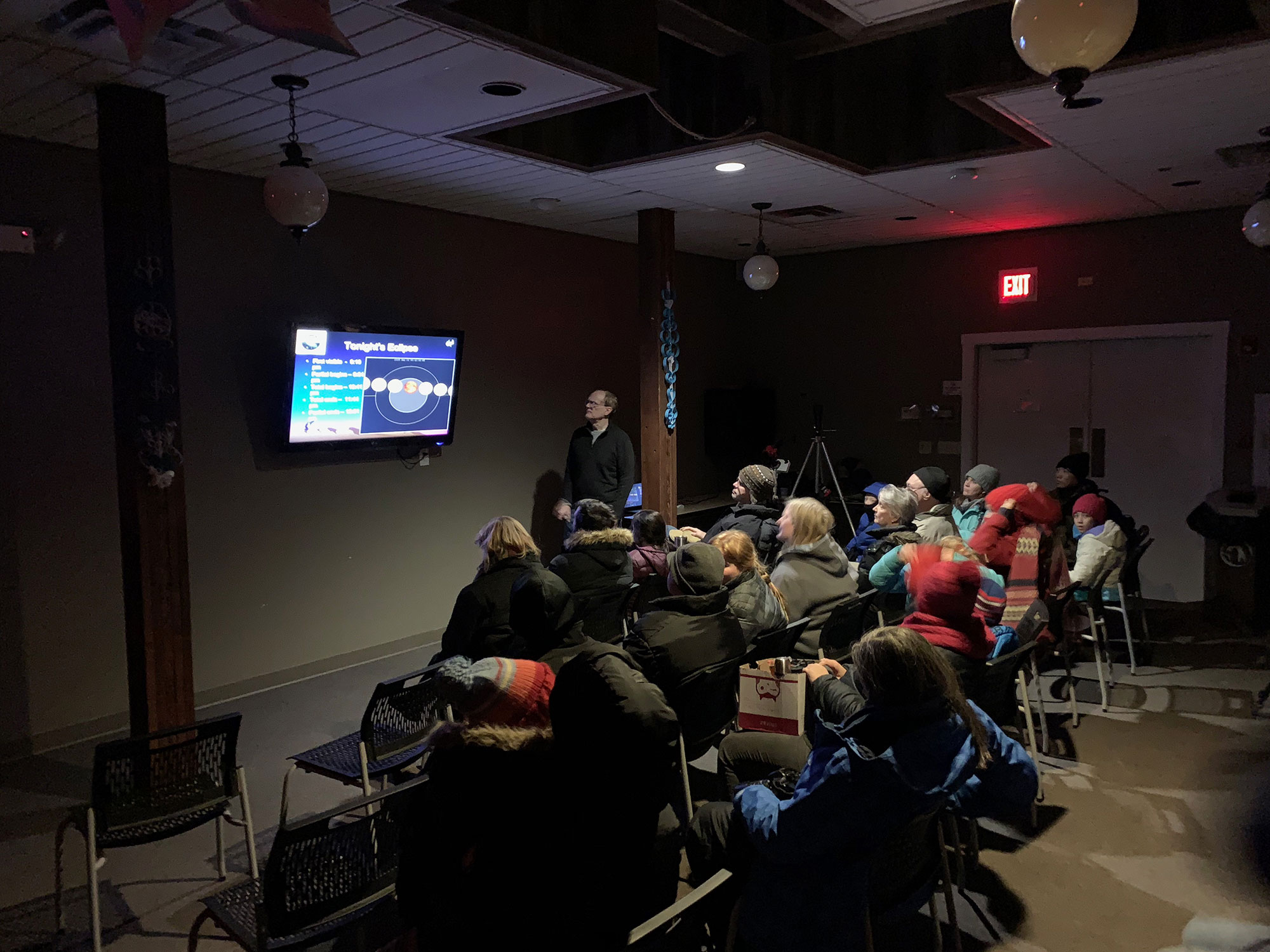
As the eclipse got underway people would periodically pop outside to look through the various telescopes and binoculars everyone had setup. Using an 11" Schmidt Cassegrain telescope, I was a bit overpowered for a full moon - viewing through the eyepiece you can only see about 60% of the surface, and its almost too bright without any filters. To make things easier on everyone I just turned my camera over to live view and let everyone see that way. I had a fun time answering everyone's questions, and hearing them ooh and ahh as they got a close up view of the moon (some for the first time).
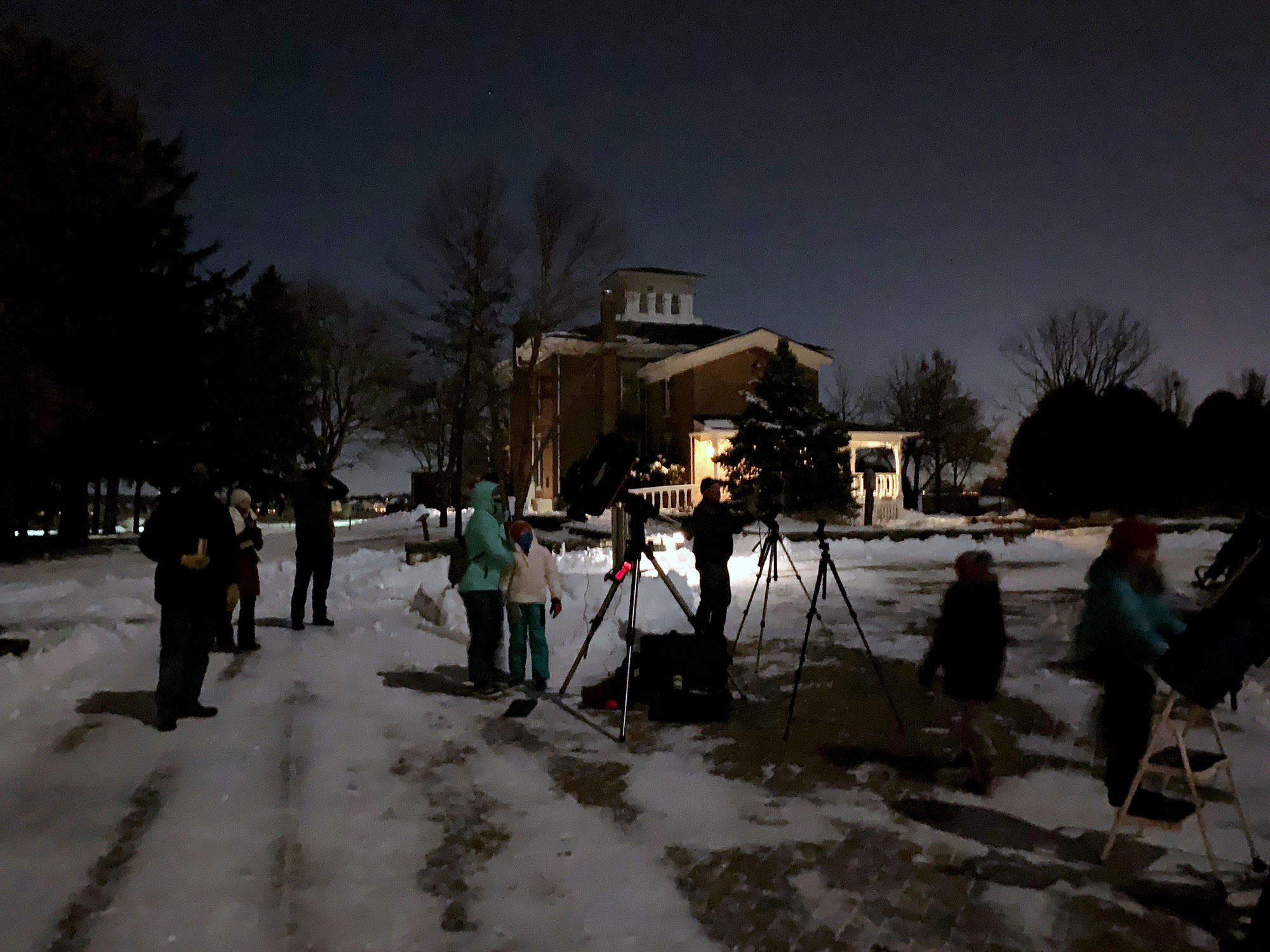
As the earth's shadow crept along the moons surface I would pop outside and snap a few frames. It wasn't until it was about 30% covered when I could fit the entire lit surface in one shot.
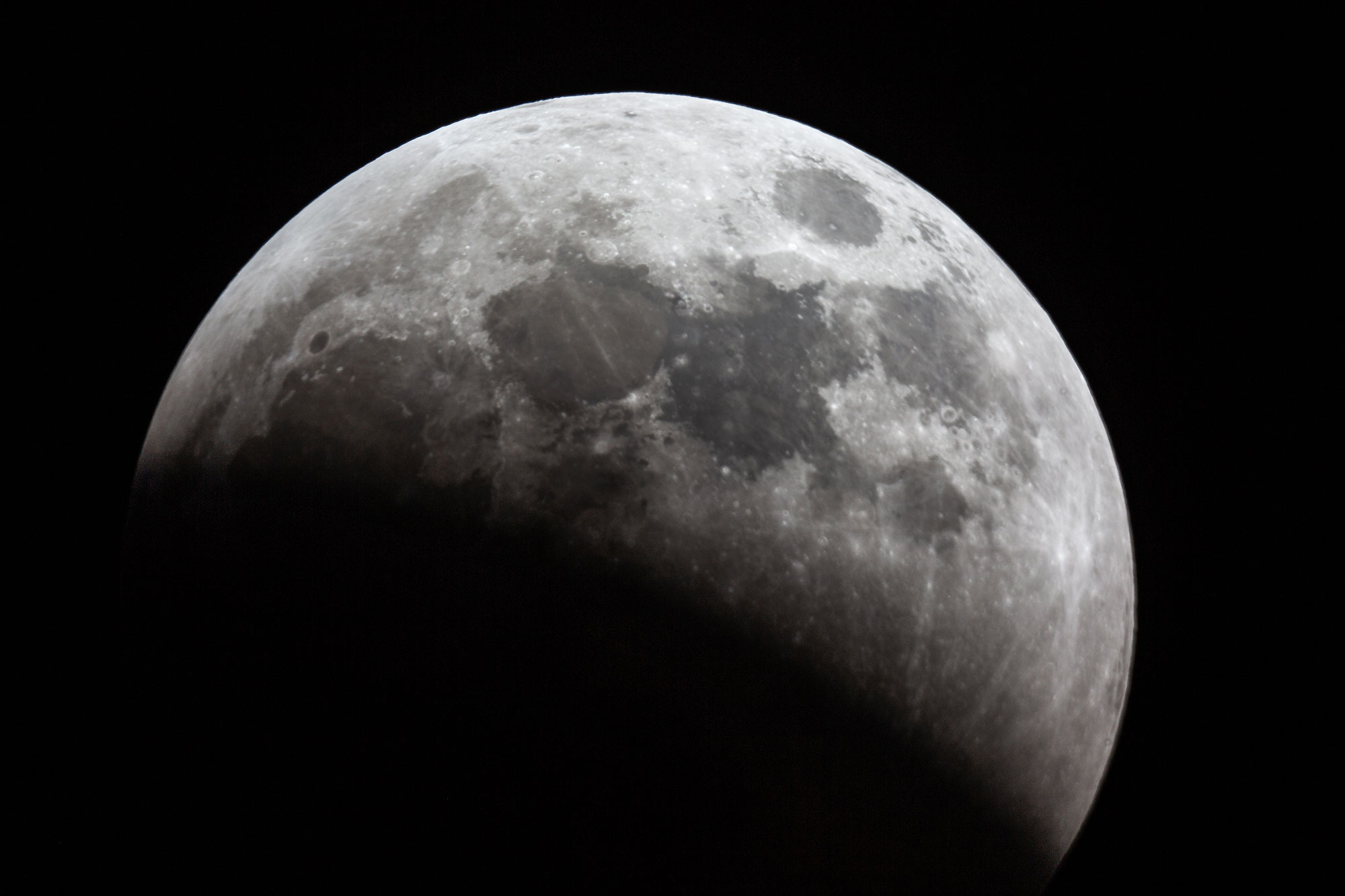
By the time of totality the temperature had plunged to just above 0°. It was so cold that I couldn't have my glove off for more than a few seconds to adjust my camera. I was also getting camera shake from my remote shutter release cable - it was so cold that it was almost completely stiff, and if I moved my hand the cable would introduce enough vibration to ruin the shot.
Since a lunar eclipse is a rather slow event I was able to take my camera off the telescope and get my 70-200mm f/2.8 lens out for some wide shots. Mark C had mentioned that the Beehive Cluster of stars was about 7 degrees to the south east, and should be visible with any exposure of more than a few seconds. I tried a number of shots, but found that at 150mm anything over 6 seconds would introduce star trails since I was on an unguided tripod. I took this exposure at 4 seconds and it came out perfectly. Below and to the left of the moon you can see the cluster.
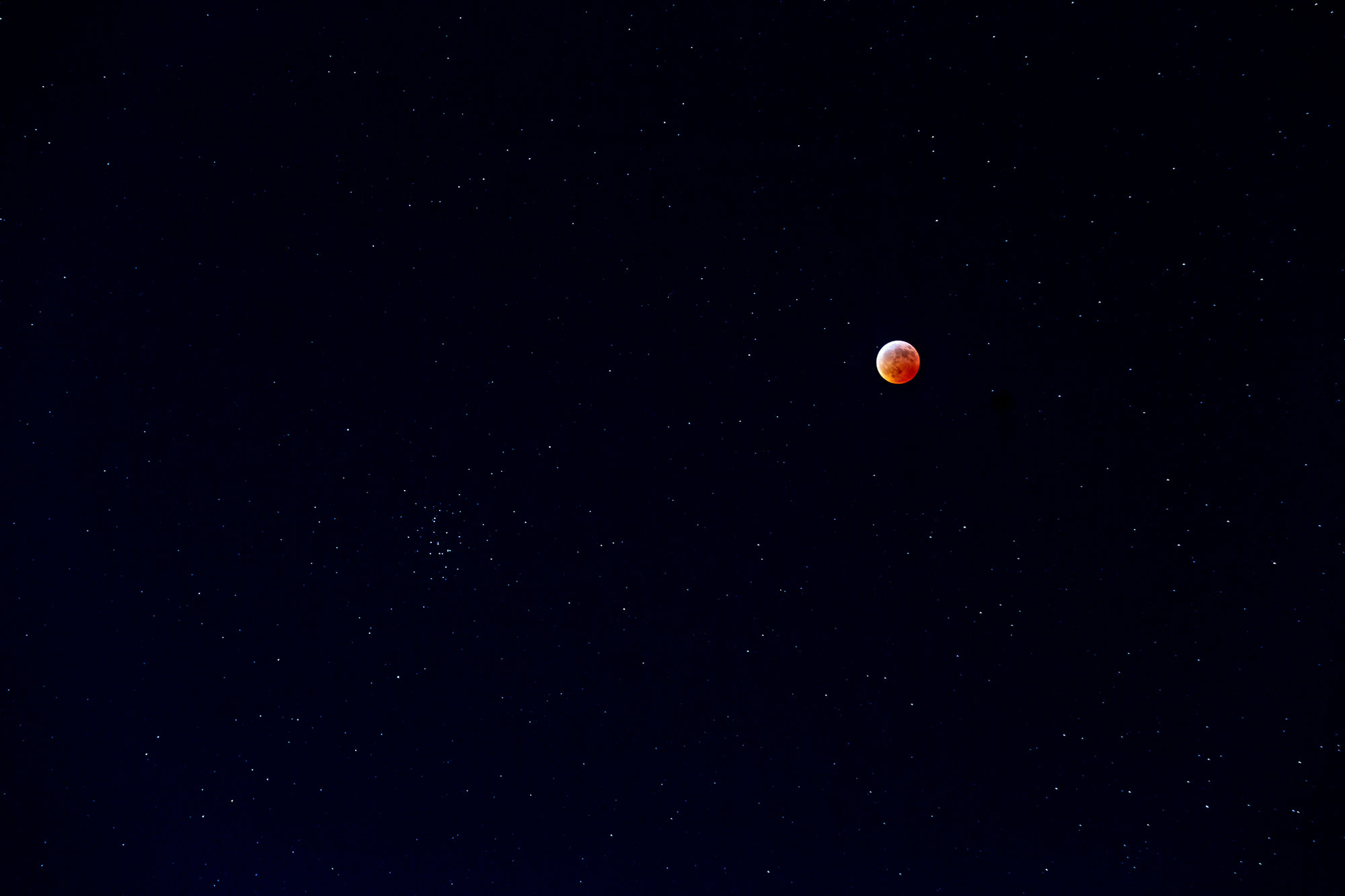
As the night wore on it started to get almost unbearable being outside. I was able to stay from the beginning of the eclipse at about 9:30 to just after midnight. Had it been warmer I would have stayed for all phases, but my hands were numb and my back hurt from being up and down all night so I decided to pack up my gear and head home. Despite the freezing cold my camera battery was still at 50% which I was not expecting, so tip of the hat to Canon. The 5D MkIII had zero issues being out in the cold for hours on end. I was delighted with my results though. Here is a progression from the the beginning to totality.

And here is my first pass at editing a single photo of totality. Using my telescope as a lens gives me an effective focal length of about 2800mm, so the full moon does not fit in one frame. I took groups of three shots to make sure I was wide enough not to just capture the moon, but at totality to get some stars in the frame as well.
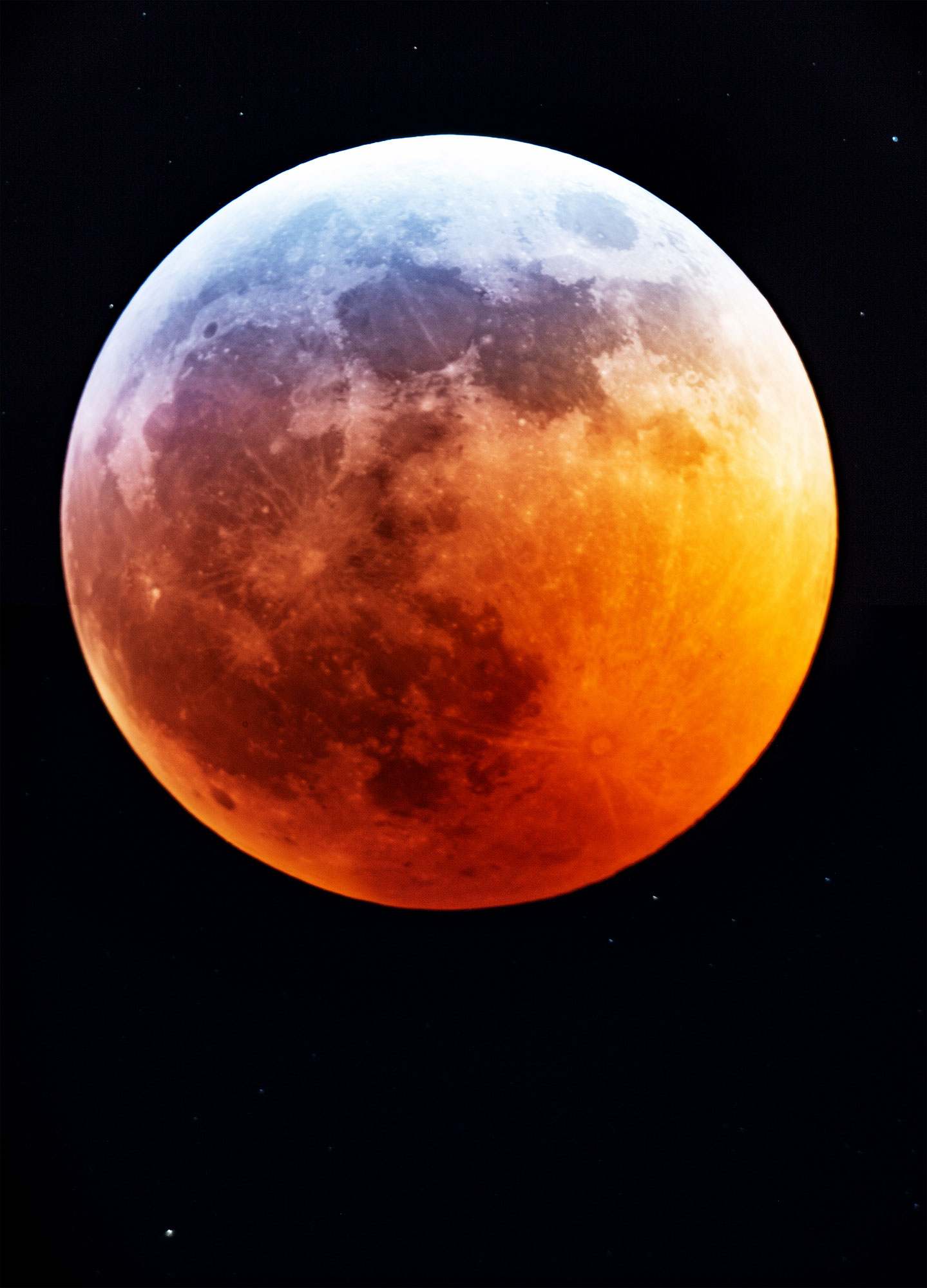
Another eclipse in the books, and despite the cold I am really happy with how everything turned out. The only downside is that we have to wait until 2022 for the next full lunar eclipse. The next astrological event to look forward to is Mercury will transit the sun in November, so stay tuned for that!